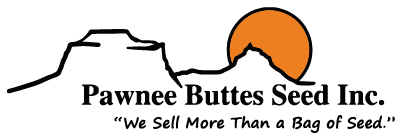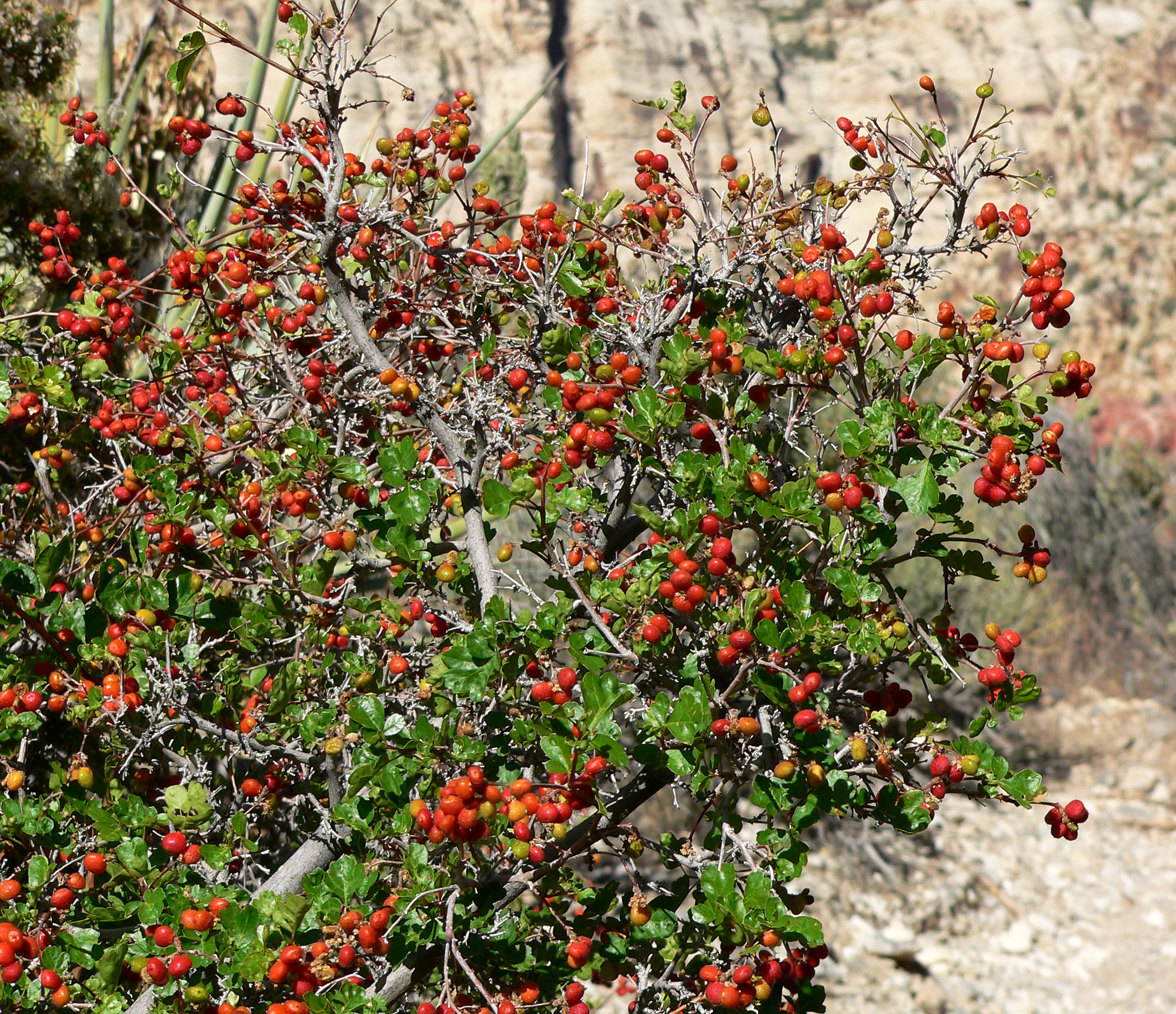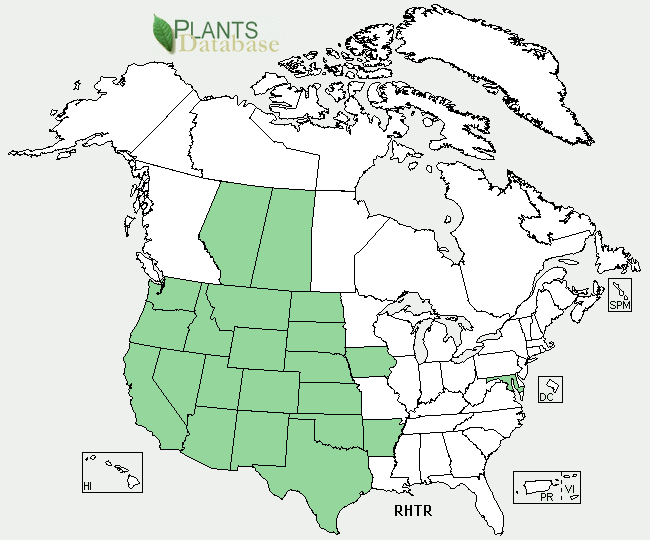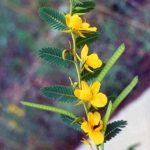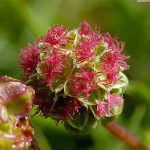Skunkbush
Rhus trilobata
Skunkbush is a deciduous, perennial cool-season native shrub. It grows 2 to 12 feet tall (sometimes higher), averaging 4 feet. Livestock in some locations use Skunkbush, but it is not a preferred species. It has been planted in some locations as a deterrent to grazing animals. It has been used as an ornamental (the fall leaves turn bright yellow, orange, and red to reddish-purple), and it has been widely planted at recreation sites, rest areas, and roadsides. It is useful for windbreaks, shelterbelts, and because of the strong root development, for erosion control. It grows in prairies to shrublands and oak woodlands at elevations of about 3,000-10,000 ft. and in a variety of sites including dry rocky slopes, stream sides, seasonal drainages, and canyon bottoms, sand dunes and sandhills, pastures, roadsides, and waste places — in sun or partial shade and over a wide range of soils from nearly bare rock to sand and heavy clay. It is intolerant of flooding and high-water tables.
Lifespan: perennial
Season: cool
Uses: amnenity grassland, reclamation, CRP, pollinator, wildlife habitat, biodiversity
Native or Introduced: Native
Annual Average Precipitation: 12 inches
Field Seeding Rate (lbs/acre): 40 to 50
Turf Seeding Rate (lbs/1000 s.f.): n/a
